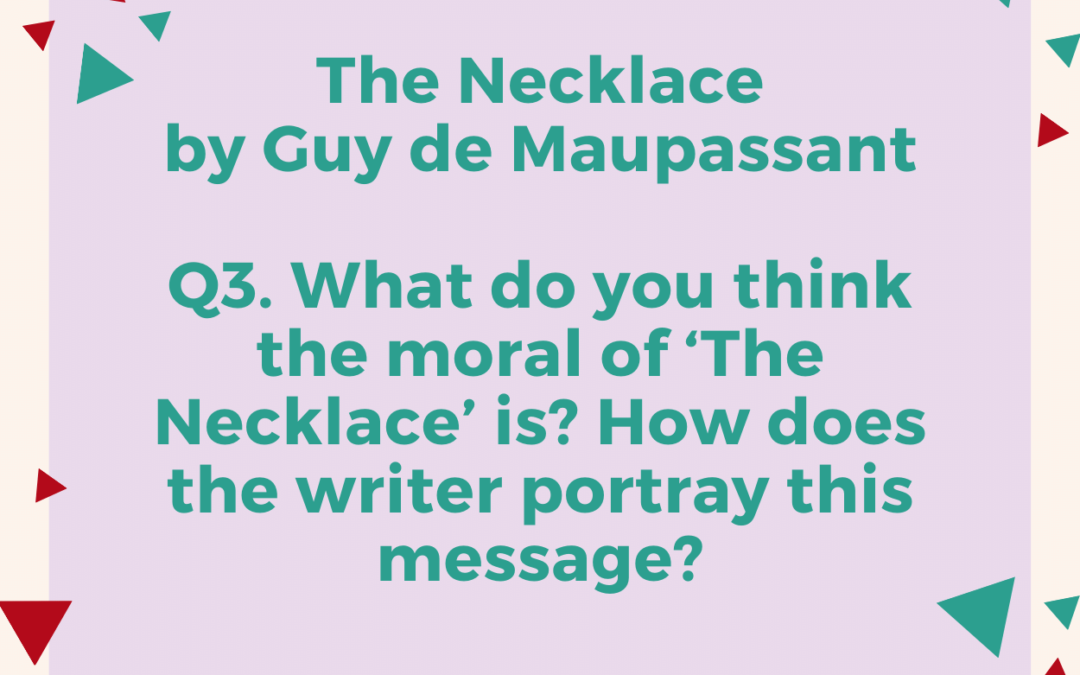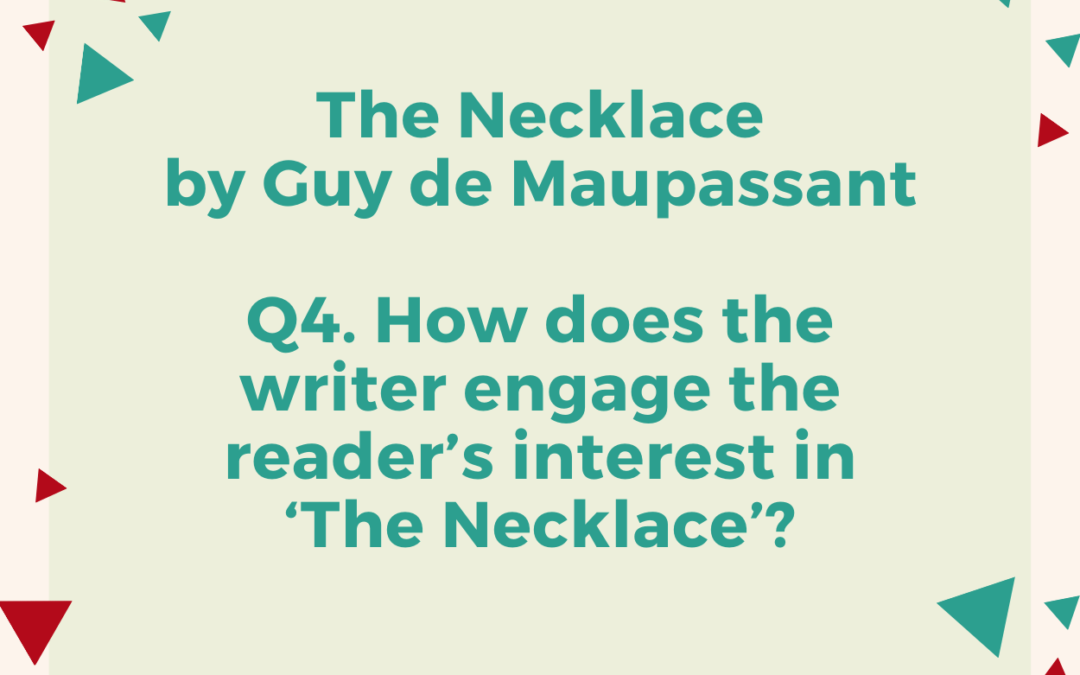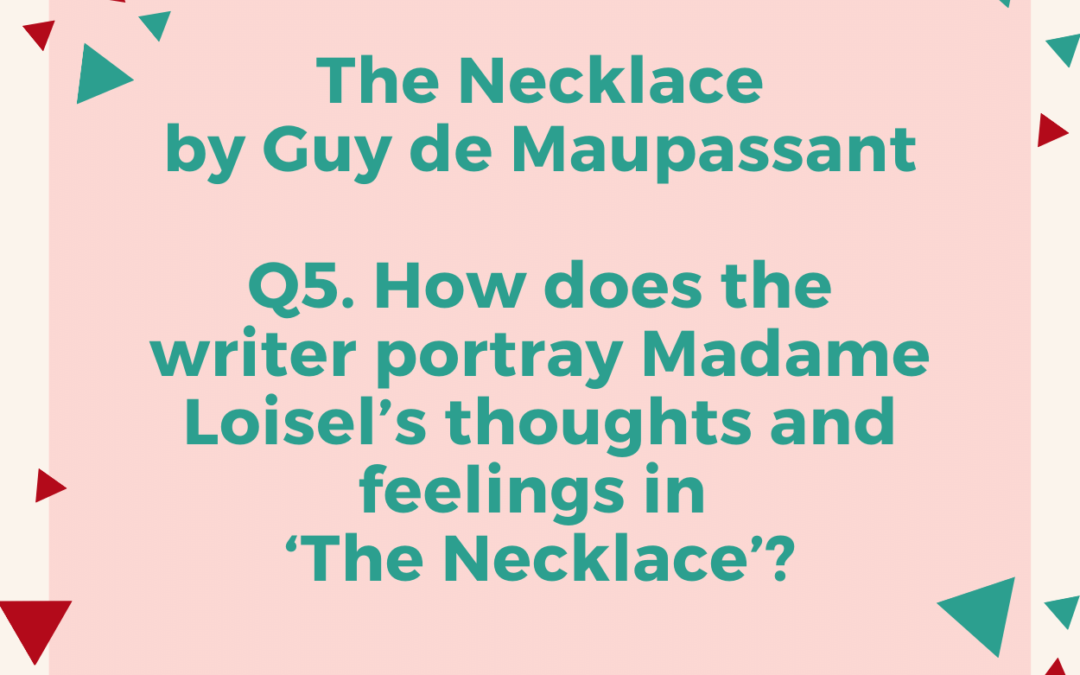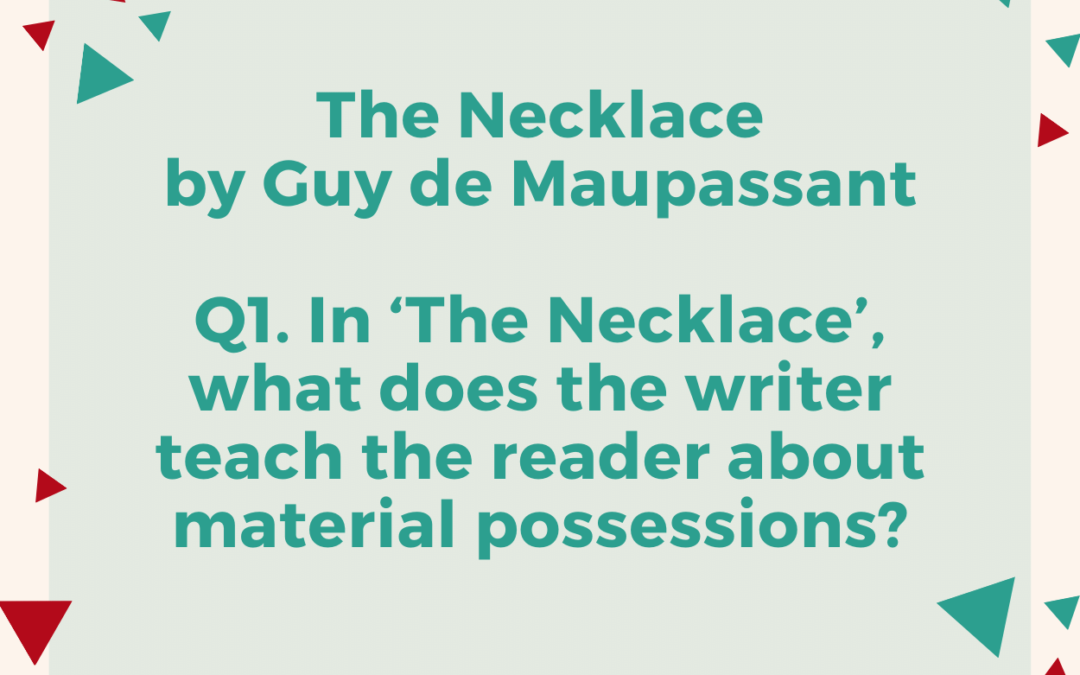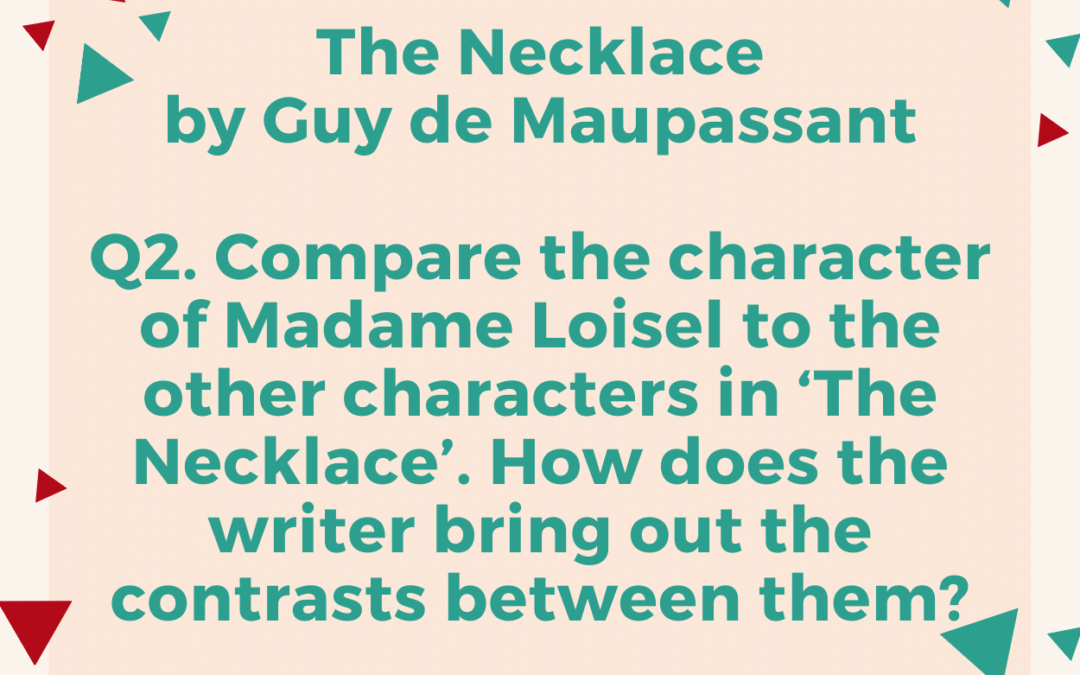
IGCSE The Necklace by Guy de Maupassant Model Essays Question 02
Edexcel English IGCSE: The Necklace by Guy de Maupassant
Q2. Compare the character of Madame Loisel to the other characters in ‘The Necklace’. How does the writer bring out the contrasts between them?
In your answer, consider:
- Madame Loisel’s husband;
- Madame Forestier;
- use of language techniques.
You should refer closely to the passage to support your answer. You may use brief quotations.
Edexcel English IGCSE Model Essay by an Expert
In ‘The Necklace’, the writer brings out the negative characteristics of Madame Loisel through contrasts with her husband and her friend, Madame Forestier. Madame Loisel is presented as negative, cruel, and placing too high a value on material possessions.
Although she lives a relatively comfortable life at the beginning of the story, Madame Loisel is constantly dissatisfied with her lot, which contrasts with the attitude of her husband. The first three paragraphs of the story give a detailed description of her dissatisfaction with her life, causing her to be “unhappy all the time”. Exaggerated vocabulary is used to show how unreasonable her discontent is: her life is “torture” and she considers herself a “spectacle”. In direct contrast to Madame Loisel’s unreasonable misery, her husband speaks “delightedly” about his dinner! His short, joyful exclamations are immediately followed by a very long sentence describing what Madame Loisel would rather have. This highlights the contrasts in their character.
Contrasting her husband’s kindness and supportiveness, Madame Loisel can be cruel and manipulative, showing her self-centredness in contrast to her husband’s selflessness. An example of this is when he brings her the invitation to the party. He “brandished” the envelope, showing that he believes that this will be an impressive and pleasant surprise. However, the adverbs describing Madame Loisel’s reaction – “peevishly”, “irritably” and “shortly” – show that she is ungrateful for his efforts. To highlight her cruelty towards her well-meaning husband, the writer describes his emotional reaction to her meanness, eliciting sympathy in the reader: he is “disconcerted and dismayed” and “devastated”. Madame Loisel takes advantage of his selfless desire to please her, forcing him to give her money for clothes and jewellery. This contrast shows her to be a manipulative character.
Unlike her friend Madame Forestier, Madame Loisel places a great deal of value on material possessions. When Madame Loisel asks to borrow some jewellery, Madame Forestier responds flippantly, showing that she has a casual attitude towards her riches: the dialogue “Choose whatever you like” and “Just look” suggests that Madame Forestier does not care about her possessions as much as Madame Loisel does. This contrast between Madame Loisel and her friend is the cause of Madame Loisel’s tragic downfall. Madame Forestier places such little value on her possessions that she is happy to have cheap, imitation jewellery; it is Madame Loisel’s assumption that this would not be the case that causes her and her husband to have to sacrifice everything they have, to unnecessarily buy an expensive replacement.
In this story, the reader is encouraged to dislike and lose respect for Madame Loisel. This is heightened by the contrasts with the kind and reasonable people around her.



